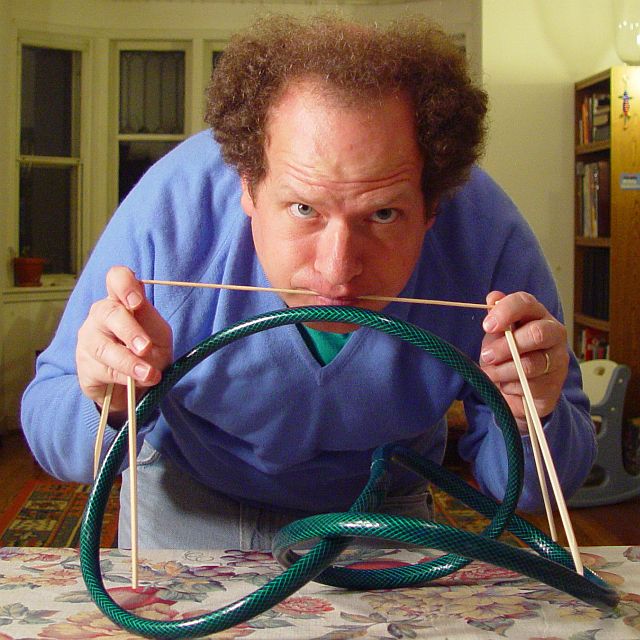Knot Atlas:About
What is the Knot Atlas
It's editable
Almost everything in the Knot Atlas is user editable; anyone anywhere can add or change almost everything so we know it can and will grow very informative and complete. Yet mechanisms are in place to ensure that the information in the Knot Atlas will remain quite reliable (though see the Disclaimers).
It's a knot atlas
Every knot and link up to some size has a page with much data about it: words, pictures, and values of many knot invariants. Click Random Page here or on the navigation sidebar on the left, and, with a high probability, this will take you to one of those knot/link pages.
It's a knot theory database
Most available knot invariants are stored as individual database entry, under titles such as Data:5 2/Bridge Index (so this entry contains the bridge index of the knot 5_2, which happens to be 2). It is easy to read, write and create new data base entries. Programs are provided, and further programs will be provided, to allow machine reading and writing of database entries. Reading and writing happens via http and is not tied to any language or platform.
It's a knot theory knowledge base
In addition to numerical, polynomial and other "math-valued" invariants, there's room for anyone easily contribute from her/his knowledge of any given knot or link, and it is very easy to add and link more general articles. Thus we expect that in time, the Knot Atlas will grow to be a central, or the central, knot theory knowledge base. Looking for a link with vanishing Multivariable Alexander Polynomial? Wondering if there's anything special about 10_123? It is now, or it will be soon, easy to find out the answers using the Knot Atlas.
It's a home for some computer programs
At the moment, this is mainly The Mathematica Package KnotTheory`, capable of computing a whole range of knot invariants (though much remains to be done). We hope more will come.
Who's running the Knot Atlas?
The Knot Atlas runs on a server called 'katlas.math.toronto.edu', that lives under Dror's desk in the maths department at the University of Toronto. The server and wiki software are maintained by Dror and Scott, and for now at least they're doing most of the development work on the Knot Atlas. If you have something to contribute, whether it's interesting facts about certain knots, tables of data, or computer algorithms, then you can! If you're not sure where to get started, don't hesitate to ask.
| File:Katlas |

